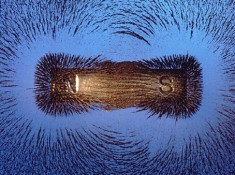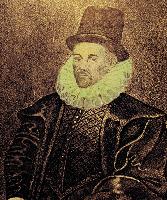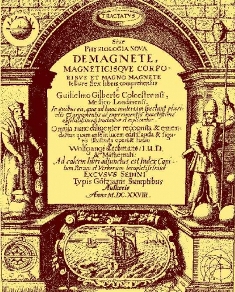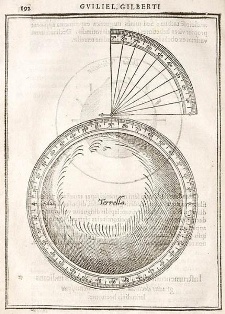William Gilbert and the beginning of experimental studies of electricity and magnetism
In the XVI - XVII centuries. With the development of trade in Europe is increasingly becoming an experimental method of scientific research, one of the founders of which rightly called Leonardo da Vinci (1452-1519 gg.). This is in his notebook you can find the significant words: "Do not listen to the teachings of those thinkers whose arguments are not confirmed by experience." Already mentioned earlier, the Neapolitan Jovan Battista Porta (1538-1615 gg.) In his work "Natural Magic" emphasizes that all the facts he has read from the writings of ancient scientists and travelers, he tried to test his own experience "day and night, with great costs."
The experimental method of research dealt a noticeable blow to mysticism and all sorts of fictions and prejudices.

A significant change in the notion of electric and magnetic phenomena occurred at the very beginning of the 17th century, when the fundamental scientific work of the prominent English scholar William Hilbert (1554-1603) was published on the magnet, magnetic bodies and the great magnet - the Earth "(1600 G.). Being a follower of the experimental method in natural science. V. Gilbert conducted more than 600 skillful experiments that revealed to him the secrets of the "hidden causes of various phenomena."
 Unlike many of his predecessors, Hilbert believed that the cause of the action on the magnetic needle is the magnetism of the Earth, which is a large magnet. He based his conclusions on the original experiment, which he first realized.
Unlike many of his predecessors, Hilbert believed that the cause of the action on the magnetic needle is the magnetism of the Earth, which is a large magnet. He based his conclusions on the original experiment, which he first realized.
He made from a magnetic iron rod a small ball - "a small earth - a terrell" and proved that the magnetic needle takes the same positions on the surface of this "terrell" as it takes in the field of terrestrial magnetism. He established the possibility of magnetizing iron by terrestrial magnetism.
Investigating magnetism, Hilbert also engaged in the study of electrical phenomena. He proved that not only amber, but also many other bodies - diamond, sulfur, resin, rock crystal, which are electrified by their rubbing, possess electrical properties. These bodies he called "electrical", in accordance with the Greek name of amber (electron).
But Gilbert unsuccessfully tried to electrify the metals without isolating them. Therefore, he came to an erroneous conclusion about the impossibility of electrifying metals by friction. This conclusion of Hilbert was convincingly refuted after two centuries by the outstanding Russian electrical engineer, Academician VV Petrov.
V. Hilbert correctly established that "the degree of electric force" is different, that moisture reduces the intensity of electrification of bodies by rubbing.

Comparing magnetic and electrical phenomena, Hilbert argued that they have different nature: for example, "electric force" occurs only from friction, while magnetic - constantly affects iron, the magnet raises bodies of considerable gravity, electricity - only light bodies. This erroneous conclusion of Hilbert lasted more than 200 years in science.
Trying to explain the mechanism of the action of the magnet on iron, and also the ability of electrified bodies to attract other light bodies, Hilbert considered magnetism to be a special "force of animate creature," and electrical phenomena, the "expiration" of the finest fluid, which, due to friction, "pours out of the body" and acts directly On another attracted body.

Hilbert's ideas about electrical "attraction" were more correct than many of his contemporary researchers. According to their statements, when rubbing from the body, the "finest liquid" is released which repels the air adjacent to the object: the more distant layers of air surrounding the body resist the "expiration" and return them together with the light bodies back to the electrified body.
For many centuries, magnetic phenomena have been explained by the action of a special magnetic fluid, and as will be shown later - Hilbert's fundamental work was sustained during the 17th century. Several editions, he was the reference book of many naturalists in different countries of Europe and played a huge role in the development of the doctrine of electricity and magnetism.
Veselovsky O. N. Shneberg A. Ya "Essays on the history of electrical engineering"


Comments
When commenting on, remember that the content and tone of your message can hurt the feelings of real people, show respect and tolerance to your interlocutors even if you do not share their opinion, your behavior in the conditions of freedom of expression and anonymity provided by the Internet, changes Not only virtual, but also the real world. All comments are hidden from the index, spam is controlled.